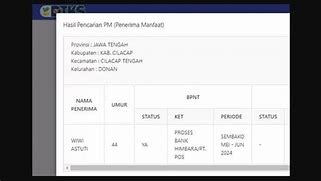
Merahtoto Slot 1
Merahtoto adalah satu-satunya platform yang menghadirkan provider taruhan bola paling lengkap terbesar di Asia! Berapapun taruhan yang anda pasang akan kami bayarkan kemenangannya secara penuh lunas sekaligus. Ayo mulai bergabung bersama kami dan pasang taruhan di tim kesayangan anda!
Merahtoto adalah satu-satunya platform yang menghadirkan provider taruhan bola paling lengkap terbesar di Asia! Berapapun taruhan yang anda pasang akan kami bayarkan kemenangannya secara penuh lunas sekaligus. Ayo mulai bergabung bersama kami dan pasang taruhan di tim kesayangan anda!
Merahtoto adalah satu-satunya platform yang menghadirkan provider taruhan bola paling lengkap terbesar di Asia! Berapapun taruhan yang anda pasang akan kami bayarkan kemenangannya secara penuh lunas sekaligus. Ayo mulai bergabung bersama kami dan pasang taruhan di tim kesayangan anda!
Merahtoto adalah situs resmi yang sedang membagikan saldo gratis secara cuma-cuma untuk member baru yang mendaftar bersama situs kami. Ayo buruan bergabung bersama kami untuk dapatkan saldonya tanpa syarat, mudah dan cepat bisa langsung dimainkan di permainan apapun termasuk judi bola!
Physical and electrical specification for the connector used by some Intel microprocessors
Slot 1 refers to the physical and electrical specification for the connector used by some of Intel's microprocessors, including the Pentium Pro, Celeron, Pentium II and the Pentium III. Both single and dual processor configurations were implemented.
Intel reverted to the traditional socket interface with the release of Socket 370 in 1999.
With the introduction of the Pentium II CPU, the need for greater access for testing had made the transition from socket to slot necessary. Previously with the Pentium Pro, Intel had combined processor and cache dies in the same Socket 8 package. These were connected by a full-speed bus, resulting in significant performance benefits. Unfortunately, this method required that the two components be bonded together early in the production process, before testing was possible. As a result, a single, tiny flaw in either die made it necessary to discard the entire assembly, causing low production yield and high cost.[citation needed]
Intel subsequently designed a circuit board where the CPU and cache remained closely integrated, but were mounted on a printed circuit board, called a Single-Edged Contact Cartridge (SECC). The CPU and cache could be tested separately, before final assembly into a package, reducing cost and making the CPU more attractive to markets other than that of high-end servers. These cards could also be easily plugged into a Slot 1, thereby eliminating the chance for pins of a typical CPU to be bent or broken when installing in a socket.
The form factor used for Slot 1 was a 5-inch-long, 242-contact edge connector named SC242. To prevent the cartridge from being inserted the wrong way, the slot was keyed to allow installation in only one direction. The SC242 was later used for AMD's Slot A as well, and while the two slots were identical mechanically, they were electrically incompatible. To discourage Slot A users from trying to install a Slot 1 CPU, the connector was rotated 180 degrees on Slot A motherboards. This also allowed motherboard manufacturers to save costs by stocking the same part for both Slot 1 and Slot A assemblies.
With the new Slot 1, Intel added support for symmetric multiprocessing (SMP). A maximum of two Pentium II or Pentium III CPUs can be used in a dual slot motherboard. The Celeron does not have official SMP support.
There are also converter cards, known as Slotkets, which hold a Socket 8 so that a Pentium Pro CPU can be used with Slot 1 motherboards.[2] These specific converters, however, are rare. Another kind of slotket allows using a Socket 370 CPU in a Slot 1. These are generally more common than Socket 8 to Slot[3] 1 slotkets. Many of these latter devices are equipped with their own voltage regulator modules, in order to supply the new CPU with a lower core voltage, which the motherboard would not otherwise allow.
The Single Edge Contact Cartridge, or "SECC", was used at the beginning of the Slot 1-era for Pentium II CPUs. Inside the cartridge, the CPU itself is enclosed in a hybrid plastic and metal case. The back of the housing is plastic and has several markings on it: the name, "Pentium II"; the Intel logo; a hologram; and the model number. The front consists of a black anodized aluminum plate, which is used to hold the CPU cooler. The SECC form is very solid, because the CPU itself is resting safely inside the case. As compared to socket-based CPUs, there are no pins that can be bent, and the CPU is less likely to be damaged by improper installation of a cooler.
Following SECC, the SEPP-form (Single Edge Processor Package) appeared on the market. It was designed for lower-priced Celeron CPUs. This form lacks a case entirely, consisting solely of the printed-circuit board holding the components.
A form factor called SECC2 was used for late Pentium II and Pentium III CPUs for Slot 1, which was created to accommodate the switch to flip chip packaging.[4] Only the front plate was carried over, the coolers were now mounted straight to the PCB and exposed CPU die and are, as such, incompatible with SECC cartridges.
Historically, there are three platforms for the Intel P6 CPUs: Socket 8, Slot 1 and Socket 370.
Slot 1 is a successor to Socket 8. While the Socket 8 CPUs (Pentium Pro) directly had the L2-cache embedded into the CPU, it is located (outside of the core) on a circuit board shared with the core itself. The exception is later Slot 1 CPUs with the Coppermine core which have the L2-cache embedded into the die.
In the beginning of 2000, around the time the Coppermine Pentium III CPUs with FC-PGA housing were already commonplace, Slot 1 was slowly succeeded by Socket 370, after Intel had already offered Socket 370 and Slot 1 CPUs at the same time since late 1998. Socket 370 was initially made for low-cost Celeron processors starting with the Mendocino Celerons, while Slot 1 was thought of as a platform for the more expensive Pentium II and early Pentium III models. Both cache and core were embedded into the die.
Slot 1 also obsoleted the old Socket 7, at least regarding Intel, as the standard platform for home users. After superseding the Intel P5 Pentium MMX CPU, Intel completely left the Socket 7 market.
VIA Apollo Pro / Pro II / Pro+
Wikimedia Commons has media related to
Rancangan Pengajaran Slot
Nama Kelas : Prasekolah Kent
Tarikh : 22 Mac 2012
Masa : 0830- 0910 pagi (40 Minit )
Bil. murid : 24 orang
Modul : Bertema
Tunjang Utama : Tunjang Kemanusiaan
Tajuk/Tema : Alam Bahan
Standard Kandungan : (KM 6.0) Saya dan alam sekitar
(KM 6.1) Menghayati keindahan alam sekitar
Standard Pembelajaran : (KM 6.1.2) Mengecam bunyi dalam alam sekitar semula jadi seperti bunyi air.
(KM 6.2.2) Bercerita dengan bimbingan guru tentang kepentingan air kepada hidupan di dunia.
Kesepaduan Tunjang : (BM 2.1.3) Berbual menggunakan ayat yang mudah dengan sebutan yang betul.
(PSE 2.3.4) Bertutur dengan penuh keyakinan.
Objektif Pembelajaran : Pada akhir pengajaran dan pembelajaran murid dapat :-
(i) Mengecam dan mengenalpasti bunyi
(ii) Menyatakan punca air
(iii) Menyatakan kegunaan air
Pengetahuan Sedia ada : Murid telah didedahkan tentang suasana alam sekitar (seperti air, pemandangan dan hidupan)
(KBKK) : Mengkategorikan
Penerapan Nilai : Kasih sayang, hormat menghormati, bertanggungjawab
Alat Bantu Mengajar : Gambar, lampiran kerja, komputer riba, pembesar suara
Fokus MI : Kecerdasan Linguistik, Kecerdasan interpersonal
Kosa Kata : Air mata air, tasik, air terjun
Mengecam bunyi alam sekitar atau hidupan yang dimainkan di komputer riba guru
1. Guru memainkan bunyi daripada komputer riba menerusi pembesar suara.
2. Murid mengecam dan menyatakan bunyi yang didengar
Berbincang dengan murid tentang suasana keindahan pemandangan, dan kegunaan air kepada hidupan di dunia.
1. Guru menunjukkan gambar satu per satu.
2. Murid meneka dan menyebut apa yang ada dalam gambar tersebut.
3. Murid menyatakan kegunaan dan kepentingan air kepada hidupan.
Aktiviti berkumpulan, suai padan gambar
1. Murid mendengar arahan guru
2. Guru membahagikan murid-murid kepada 2 kumpulan.(Dalam 2 barisan)
3. Guru memberi gambar pada setiap murid
4. Murid akan mencari pasangan gambar yang dipegang oleh kawan yang lain.
Contoh gambar ikan dengan habitatnya.
PN: hormat, bertanggungjawab
Dalam 2 barisan, barisan, barisan,
Dalam 2 barisan, barisan lurus.
*(ulang sehingga murid sedia berbaris lurus)
Penerapan nilai kasih sayang
Guru merumuskan pelajaran hari itu dan menerapkan nilai kasih sayang terhadap alam sekitar.
_______________________________________________________________________________________________________________________________________________________________________________________________________________________________________________________________________________________________________________________________________________
Intel 820/820E (Camino)
open-slot-injector 1
- application/vnd.android.package-archive
- Uploaded: 13 July 2023



